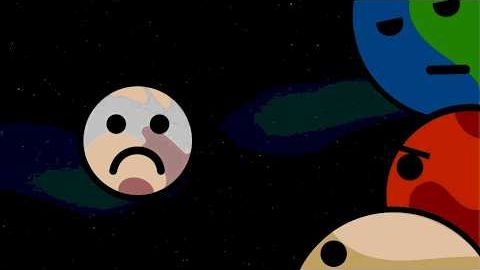冥王星は惑星なのか?
VoiceTube が 2020 年 08 月 06 日 に投稿  この条件に一致する単語はありません
この条件に一致する単語はありません- n. (c./u.)単語 : 語;約束;伝言 : 知らせ
- v.t.言葉で言い表す
- n. (c./u.)日光;太陽
- v.i.日干しする : 日光浴する
- adj.小さい;(アルファベットの)小文字の : 小文字で書かれた;重要でない : 主要でない;小さい;小規模の;(音 : 声が)弱い;低い;小さい;幼い
- n. (u.)氷;氷菓子
- v.t.氷で冷やす;アイシングを塗る
エネルギーを使用
すべての単語を解除
発音・解説・フィルター機能を解除
